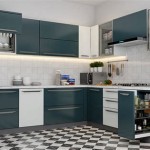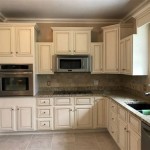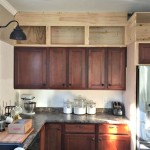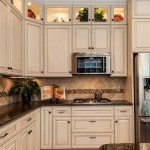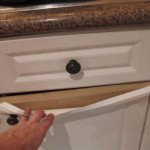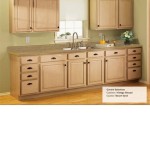Decorative Wood Trim: Enhancing the Beauty of Kitchen Cabinets
Decorative wood trim can elevate the aesthetics of kitchen cabinets, transforming them from ordinary fixtures into stunning focal points. By incorporating intricate details and architectural elements, trim adds character, depth, and sophistication to any kitchen design.
Types of Wood Trim
A variety of wood species and styles are available, including:
- Rope Molding: A classic choice, featuring a rounded, twisted profile.
- Crown Molding: An elegant addition that frames the top of cabinets with a decorative edge.
- Panel Molding: Adds depth and dimension to cabinet doors by creating recessed panels.
- Base Molding: Completes the look by adding a decorative touch to the base of cabinets.
Benefits of Decorative Wood Trim
- Increased Visual Appeal: Trim enhances the appearance of cabinets, making them a standout feature.
- Architectural Interest: Trim adds depth and texture, creating a more dynamic and visually engaging kitchen.
- Historical Character: Certain trim styles can evoke historical eras, adding charm and elegance to traditional or period-style kitchens.
- Enhanced Durability: Trim can protect cabinets from damage, such as dents and scratches, extending their lifespan.
- Increased Value: Decorative trim can significantly increase the resale value of a home, showcasing the attention to detail and craftsmanship.
Choosing the Right Trim
When selecting decorative wood trim, consider the following factors:
- Kitchen Style: Choose trim that complements the overall design aesthetic, whether it be traditional, modern, or transitional.
- Cabinet Finish: Ensure the trim harmonizes with the cabinet color and finish to create a cohesive look.
- Hardware: Consider the size and style of cabinet hardware to determine the appropriate trim scale and shape.
- Budget: Decorative trim can vary in cost, so set a budget to avoid overspending.
Installation Tips
- Use the Correct Tools: Ensure you have the necessary tools, such as a miter saw and nail gun, for precise and secure installation.
- Measure Accurately: Measure the length and angle of each trim piece carefully to ensure a perfect fit.
- Miter Joints: Cut mitered joints on the corners to create seamless connections between trim pieces.
- Securely Attach: Use nails or screws to secure the trim to the cabinets for a sturdy attachment.
- Finishing Touches: Sand any rough edges and touch up with paint or stain to complete the look.
Conclusion
Decorative wood trim is a transformative addition to kitchen cabinets, adding beauty, character, and value. By choosing the right trim and installing it with precision, you can create a stunning focal point that will elevate your kitchen design and enhance its overall appeal.
.jpg?strip=all)
How To Remove Decorative Cabinet Scrollwork Dream Green Diy

Adding Wood Trim To Kitchen Cabinets

10 Types Of Kitchen Cabinet Molding For Your Home

Adding Wood Trim To Kitchen Cabinets

Antiqued Kitchen Crown Molding

Adding Moldings To Your Kitchen Cabinets Remodelando La Casa

Decorating With Stained Trim Cabinetry Lindsey Putzier

Adding Wood Trim To Kitchen Cabinets

9 Molding Types To Raise The Bar On Your Kitchen Cabinetry

Breathtaking Kitchen Designed For Royalty Mullet Cabinet Decorative Wood Trim Molding Decor
Related Posts

